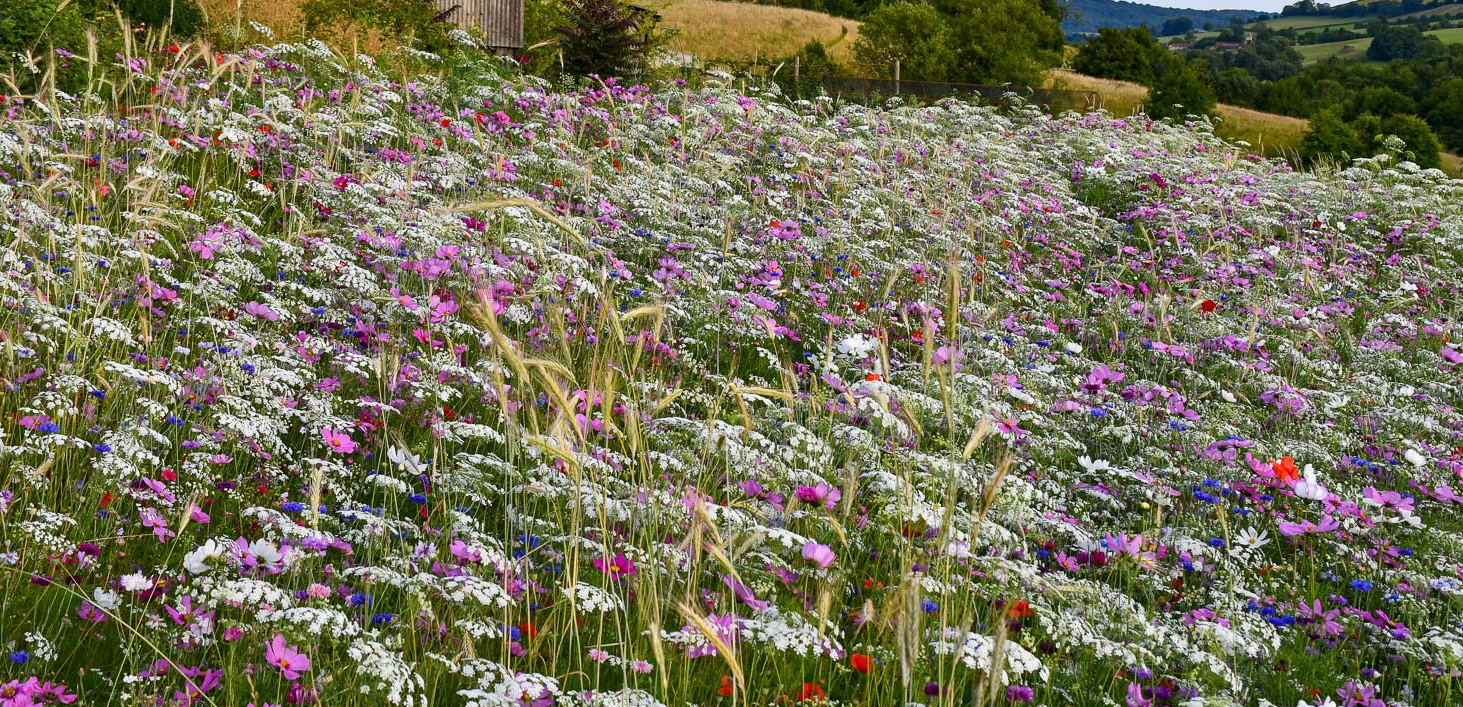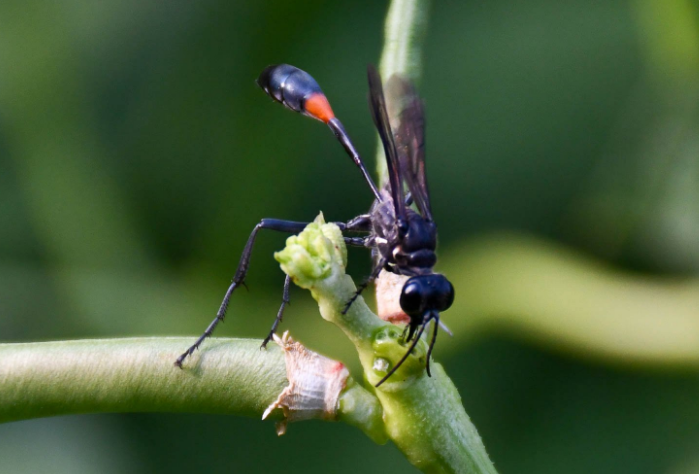As we rounded the corner of the farm, the mass planting of Rudbeckia plants was in full bloom at this end of the plinth that extends westwards from the house. It was shocking to see so much colour after crossing the quiet meadow above. I wondered how I hadn’t seen it before, but I realised that the barn and plants on the hillside above hid this pictorial meadow plant. A soft mix of amy, cosmos, cornflower and poppy provided the colour, while a feather of winter rye provided the texture above.

I was at a loss for words and started spitting out adjectives. For one of the world’s top garden designers, I may sound like a babbling idiot, but Dan agreed that it was truly spectacular. Other visitors compared it to strolling through a Disney film. It really is so beautiful!
“Come on, let’s take a look at it”, which is something I’m afraid to do. It was hidden from view from the side, but we found a narrow path through the flowers, which Dan said he designed to immerse people in the planting.
We exited the Pictorial Meadow mix and found ourselves in the barn at the back, where naturalistic plants were grown. “Most of these plants are in the ruins,” Dan shared. North American natives such as Baptisia and Amsonia thrive in the gravel mixture, while big needlegrass pops up from time to time during planting. I noticed how the colours of certain species echoed the neutrals on the building. The bronze coloured stinkhorn ‘Purple Dragon’ and fennel ‘Purpureum’ are a nod to rusty metal, as are the silvery colours of great prickly cress and Downy Pineweed. Glaucum stands out against the grey stone and metal that has not yet weathered.
Wallflowers are fading in a small circle where there are some young pumpkin plants. “Pumpkins are late to everything,” Dan says, and attributes it to the cool spring.



